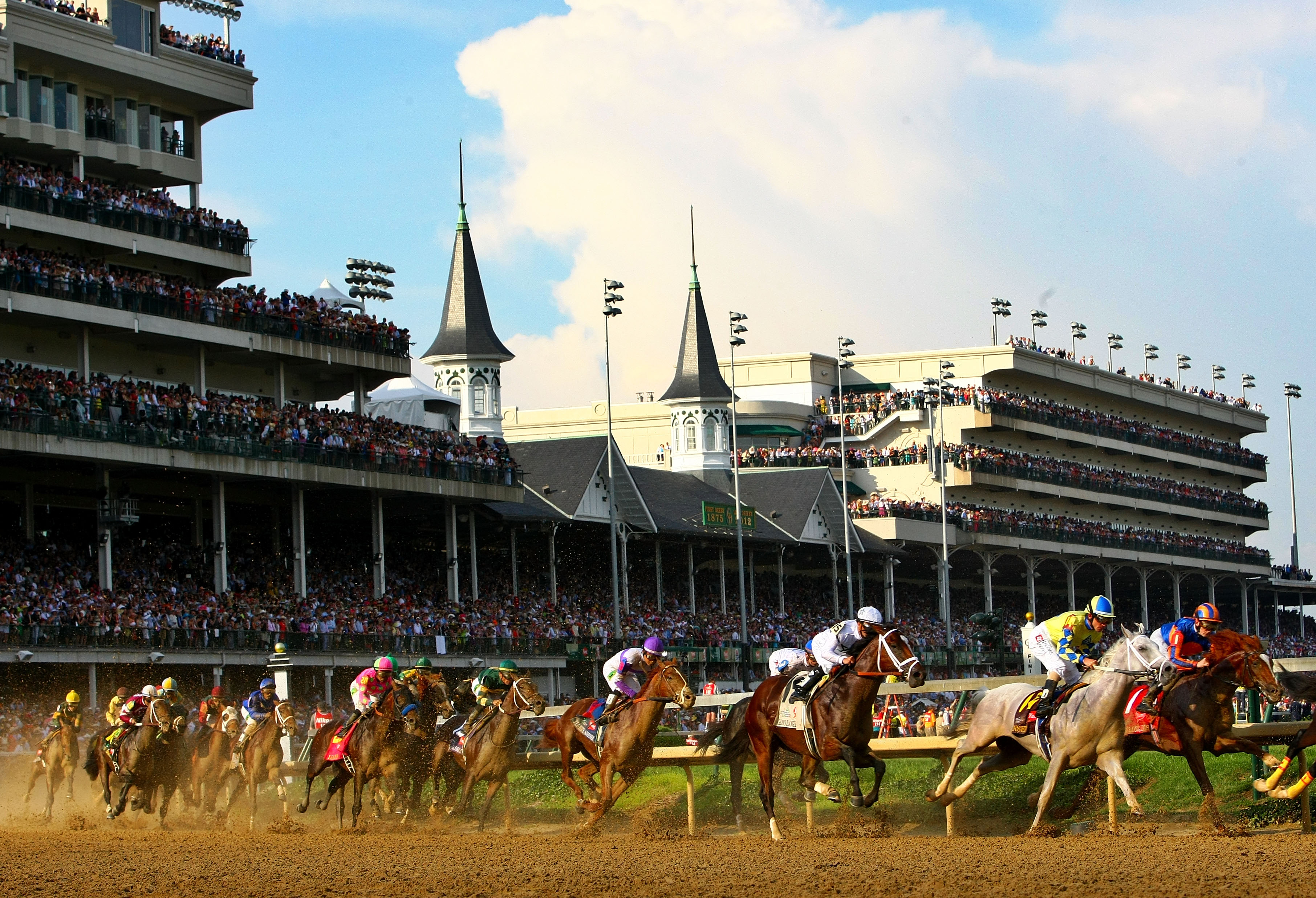Sunday is customarily the time for my weekly “Edibles & Potables” column, but the Kentucky Derby has been known to alter Louisville’s local space-time continuum, and who am I to resist? Regular readers will recognize today’s essay as a repeat from 2023, which is purely intentional. It is true that the Derby is a celebration of local tradition, much of it pertaining to food and drink. At the same time, it is helpful to remember that traditions like these are forever evolving, and over the period of my adult life, the festivities at Churchill Downs have been subject to a steady process of “upmarketing” (gentrification?) that have largely dispensed with the down ‘n’ dirty, blue collar nature of a day in the infield at “the track” during the 1970s. Whatever one’s view of playing the ponies, I feel it is important to be cognizant of “the way we were.”
So, what is it about this song “Dead Flowers,” anyway? I’m glad you asked.
In the strictest of senses, this song by The Rolling Stones isn’t about the Kentucky Derby. However, to me — and perhaps for you — “Dead Flowers” is the only imaginable soundtrack to the race each year, far transcending “My Old Kentucky Home,” which has not worn particularly well in modern times.
Well, when you’re sitting there in your silk upholstered chair
Talking to some rich folk that you know
Well, I hope you won’t see me in my ragged company
Well, you know I could never be alone
Take me down little Susie, take me down
I know you think you’re the Queen of the Underground
And you can send me dead flowers every morning
Send me dead flowers by the mail
Send me dead flowers to my wedding
And I won’t forget to put roses on your grave
Well, when you’re sitting back in your rose pink Cadillac
Making bets on Kentucky Derby day
I’ll be in my basement room with a needle and a spoon
And another girl to take my pain away
(repeat chorus)
By extension, the most relevant observations about the Derby to be made in writing were recorded more than a half-century ago by a native Louisvillian, who concluded that the event hasn’t ever been exactly as it appears.
Which is to say that Hunter S. Thompson had arrived.
(Ralph) Steadman wanted to see some Kentucky Colonels, but he wasn’t sure what they looked like. I told him to go back to the clubhouse men’s rooms and look for men in white linen suits vomiting in the urinals. “They’ll usually have large brown whiskey stains on the fronts of their suits,” I said. “But watch the shoes, that’s the tip-off. Most of them manage to avoid vomiting on their own clothes, but they never miss their shoes.”
Thompson grasped the Kentucky Derby better than most, and his 1970 account “The Kentucky Derby Is Decadent and Depraved” remains essential reading precisely because it deconstructed the mythology and described what the Kentucky Derby symbolized — what it really “was” — as foreshadowing where it was going, and very shortly would become.
(The Texan) had, after all, come here once again to make a 19th century ass of himself in the midst of some jaded, atavistic freakout with nothing to recommend it except a very saleable “tradition.”
Big-ticket events like the Kentucky Derby always have been exceptions to the rule. They’re capstones with exclamation marks. Breeding thoroughbred horses and racing them is a big business, albeit not exactly what it was 50 years ago. The conversion of Churchill Downs from racetrack to casino-driven entertainment complex proceeds toward inevitability, and just as surely the old-school, tactile joys of an outing with the ponies, bourbon and burgoo recede into the distance.
A few years back, F&D’s bourbon columnist Susan Reigler (musician, author, educator and former local restaurant critic) was chatting with Sara “Bar Belle” Havens. Reigler phrased it beautifully in a single sentence.
(Reigler’s) affinity — or awareness, we should say — for bourbon came much earlier in her life, when she would spend Saturdays at Churchill Downs with her family.
“The track in those days always smelled of old wood, cigars, popcorn and bourbon — quite a special combination,” says Reigler.
Couple this with my own childhood memories of Heywood Hale Broun doing his televised racing commentaries. First and foremost, the man could write.
To be great, a horse must have metaphorical wings. In mythology we punished wax-winged Icarus for flying too close to the sun, but in recognition of the nobility of their singlemindedness, mythology has let the chariot horses of Apollo traverse the sky. Race horses do not chaffer over money, get into bar fights or endorse horse blankets and aluminum shoes. They combine strength, grace, beauty and speed as perhaps no other link in the Darwinian chain can manage (cheetahs have funny-looking shoulders).
There was a certain poetic flair, albeit oblivious, to the way the Courier-Journal of old used to cover the varied expressions of Churchill Downs pageantry, a quality of an indefinable “something” both venerable and genteel involving rites of spring, colorful flowers, exclusive balls and parties, and as a last resort, the horses themselves. Customs were handed down from one generation to the next, and honored.
In 1970, Thompson recorded a snapshot of the Kentucky Derby during the post-war American imperial era. More recent distractions aside (COVID, climate change, culture wars), comparing 1970 to what mass market entertainment has become in the social media era of celebrity-besotted, Disney-cum-Vegas, plasticized swipe-card, UPC-tattooed entertainment experiences, during the Nixon years the experience might as well have been occurring in 1905.
But Louisville’s annual Kentucky Derby celebrations will live on, as traditions do, with certain of the bits removed, and others added. To paraphrase Heraclitus, Louisvillians never attend the same Derby party twice, for it’s not the same party, and they’re not the same Louisvillians.
On the album Sticky Fingers, an upbeat (but deadly serious) “Dead Flowers” is preceded by the bleak “Sister Morphine,” and then the record concludes with “Moonlight Mile.” As Bill Janovitz has written, “it is a quintessential album closer.”
The pervasive weariness therein is very post-Derby. We feel it every year, and then do it all over again, 149 times (and counting).






















